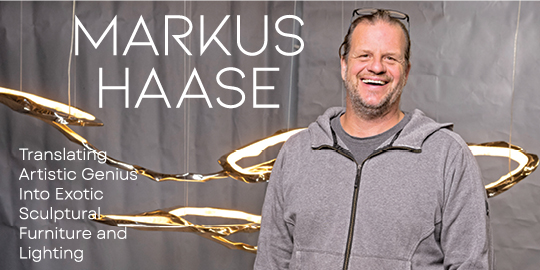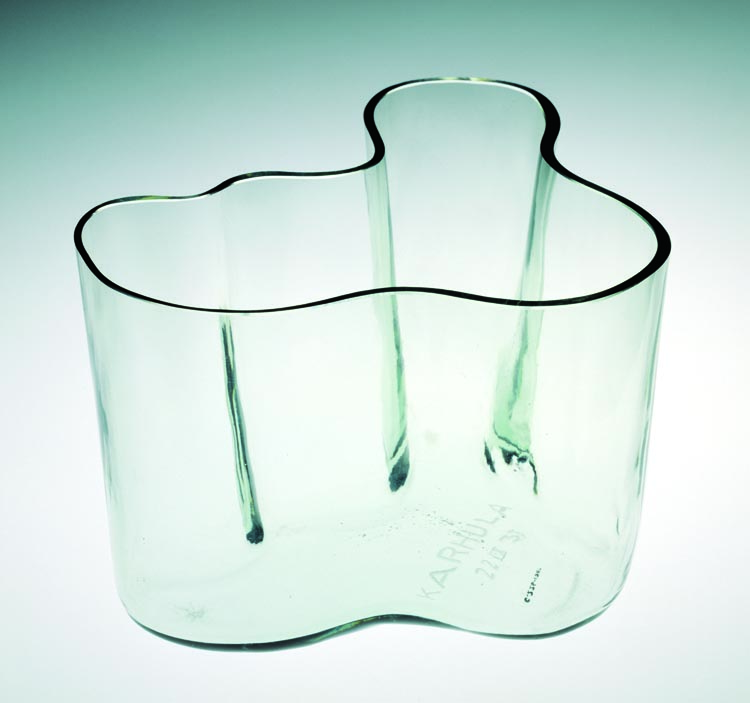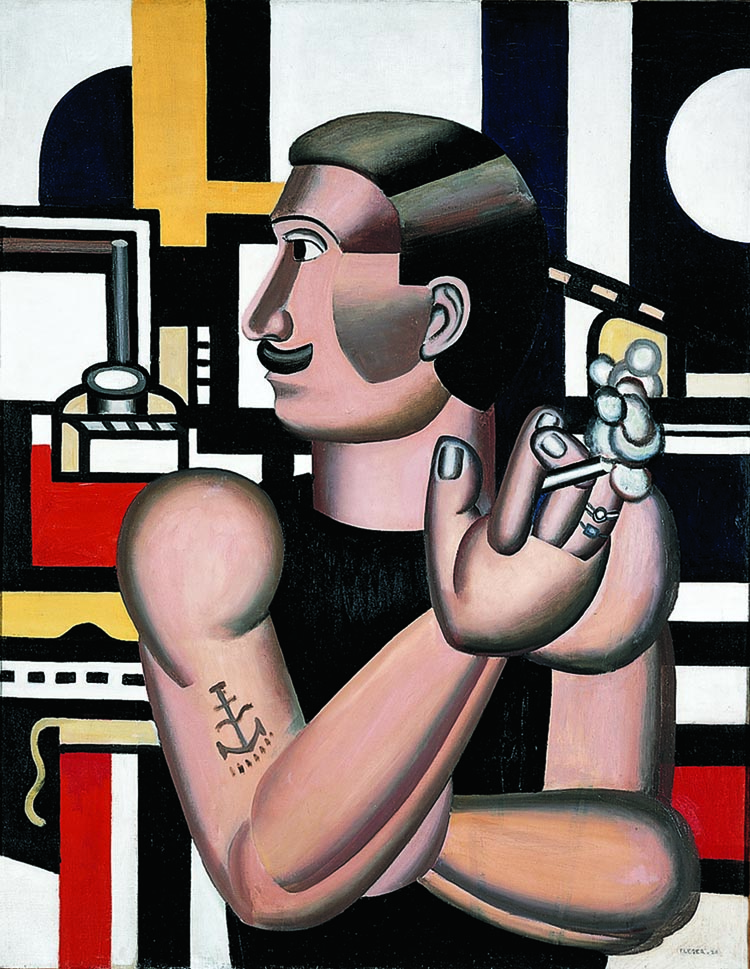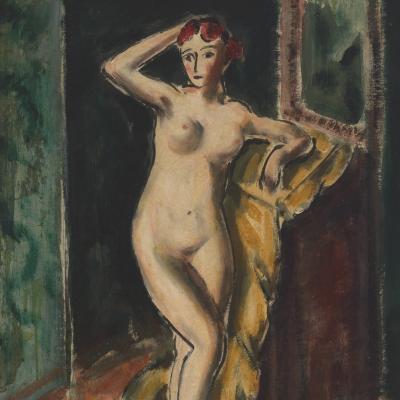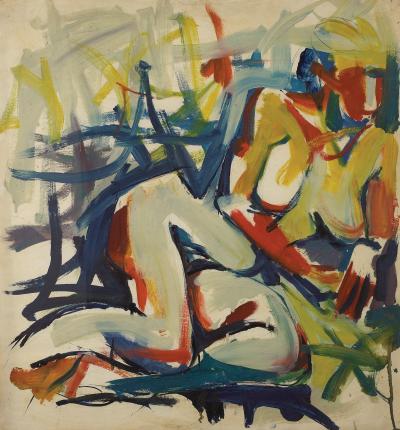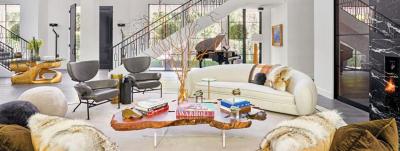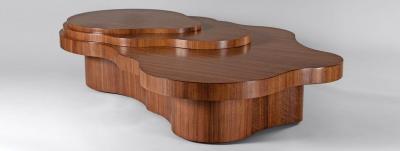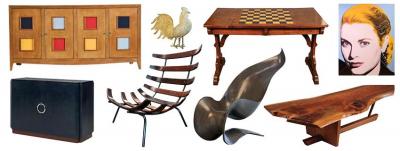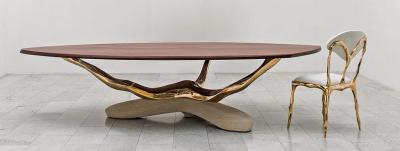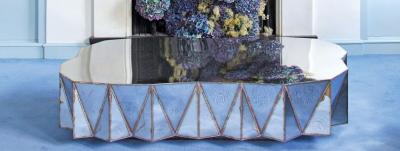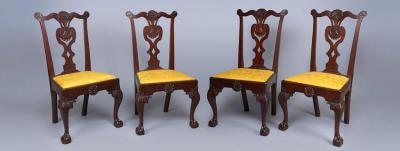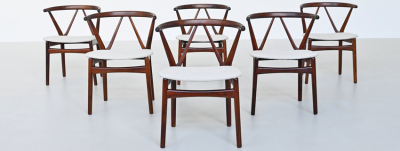Modernism: Designing a New World 1914-1939
To Emphasize American Works
the modern world
Never before have the conditions of life changed so swiftly and enormously as they have changed for mankind in the last fifty years. We have been carried along … [and] we are only now beginning to realize the force and strength of the storm of change that has come upon us.1
H. G. Wells, writing this passage in 1933, knew that he was living in a time of absolute and unprecedented transformation. People’s daily lives were changing, and this filled the great author and futurist with both excitement and foreboding. He saw that, given the extraordinary new powers science had delivered, humanity might perfect the world or use these new capabilities to bring about total annihilation.
Wells was living in the nervous and frenetic time that fell between the grim bookends of two World Wars. Technologically, this was not an especially innovative period. The electric light bulb, the automobile, the airplane, the skyscraper, the radio, and the telephone all predate World War I. It was a time of development and dispersal rather than invention; it was during the period between the two World Wars that these life-changing technologies became widespread.
It was also the time when architects, designers, and artists passionately committed themselves to the idea of a modern style. In some ways they were reacting to the unprecedented violence and destruction they had witnessed during World War I; and they were searching for ways to create a better world through art. Across the arts, both fine and applied, creative artists were striving to design objects that would both reflect and influence the events and the environment of this particularly fraught period. The most dramatic, seminal modern art forms were created in the first half of the twentieth century, in diverse yet convergent forms throughout Europe and the Americas. Specifically, it was during the interwar years of 1914–1939 that the templates were created for many of the buildings, fixtures, and fittings that still typify the modern world.
In large part, Modernist artists and designers were driven by a Utopian belief in the power of their creations. They believed they could apply appropriate new technology, combined with a single, all-embracing methodology, to every part of the manufactured environment–buildings, furnishings, products, interiors, signage, posters, and clothing–and that this could significantly improve people’s physical and psychological conditions. This Utopian zeal, together with the political inspiration of the moment, gave the Modernists a powerful moral motivation to underlie their practice, along with a mission to benefit humanity directly by producing art that would improve living standards. How their work looked was just one of their concerns; what it meant, and how it was used, were equally important.
a total art: modernism in art and life
The Modernists believed in a “total art,” the idea that all of the arts should ideally work in unison to transform the environment. Persistent elements connecting artists to the realities of everyday life were the industrialization of the landscape–and the prevalence of a machine aesthetic that linked design to the workers’ worlds. This inspired Walter Gropius’s multidisciplinary program at the Bauhaus school in Germany (1919–1933). Gropius believed that the innate design of an industrial object, building, or home could directly affect community and city planning. He later wrote:
“My idea of the architect as the coordinator–whose business is to unify the various formal, technical, social, and economic problems that arise in connection with the building—inevitably led me on, step by step, from study of the function of the house to that of the street; from the street to the town; and finally to the still vaster implications of regional and national planning.”2
For Gropius and his fellow Modernists, the new society was to be built from the ground up, with each individual element contributing to the greater whole. As part of the “total art,” paintings and living room chairs, table lamps and skyscrapers, all worked in concert to construct a new version of Utopia. Looking at specific examples in Europe, and then the United States, it is possible to see the continuity of these beliefs across national boundaries and cultures.
constructivism — a social art in the ussr
In 1917, the Russian Revolution established the first worker-controlled state in modern Europe. To many at the time, it was a symbol of the transformation of society, and Russian avant-garde artists were prominent in promoting the new vision of a Communist Utopia. Vladimir Tatlin’s Model for a Monument to the Third International, of 1920, suggests the integration of art into everyday life. Its spiral structure, open-frame construction, and rotating glass shapes were progressive in both form and function. Tatlin intended his 1300+-foot iron and glass tower to house the Third Communist International, or Comintern—and to symbolically project the spirit of the revolution skyward.
Tatlin was joined by young artists including Varvara Stepanova, Alexander Rodchenko, and the brothers Naum Gabo and Antoine Pevsner, all of whom emphasized the use of technology to bring together different art forms. Together, they declared an end to “pure art” in favor of a social art that could be used to help construct a new society. Termed Constructivism, their work incorporated sculptural objects that implied space through intersecting shapes and planes, rather than using solid forms, as well as industrial and graphic design, engineering, clothing design, and interior design.
Constructivist art was centered in Moscow at VKhUTEMAS—a Russian acronym for the “Higher State Artistic and Technical Workshops.” Led by Nikolai Ladovsky at VKhUTEMAS, designers worked on visionary architectural projects that linked technology and functionalism. Ladovsky’s design for a communal house brought together all artistic media to envision the construction of a Communist Utopia. His Association of New Architects also included El Lissitzky, Konstantin Melnikov, Vladimir Krinsky, and Nikolai Dokuchaev.
total art in the netherlands
Artists in the Netherlands also worked to harmonize all the arts–including painting, sculpture, architecture, product, and furniture design–around a nonobjective, abstract agenda known as De Stijl. Piet Mondrian’s spare abstractions based on ideas of spiritual harmony inspired other practitioners such as Theo van Doesburg and Gerrit Rietveld to explore a geometric foundation for social understanding. As van Doesburg wrote in his 1923 essay Towards Collective Construction, “We must understand that art and life are no longer separate domains. The idea that art is an illusion divorced from real life must therefore be abandoned. We demand that it be replaced by the construction of our environment according to creative laws derived from well-defined principles.”3
In this way, van Doesburg articulated the larger Modernist belief in the interconnections between art and life.
america
Throughout Europe there emerged various connected movements that, as a group, form what we know as Modernism: Suprematism in the Soviet Union, Purism in France, and Futurism in Italy, just to name a few. Fueled by the first-hand experience of the war and the rapidly industrializing landscape and culture, Modernism had developed in Europe before becoming a major force in the United States. Once Modernism did enter the fabric of American life, however– with a bang, on February 17, 1913—it developed its own distinctive patterns and textures. The occasion, on that date, was the opening of the International Exhibition of Modern Art in New York City’s 69th Regiment Armory, hosted by the American Association of Painters and Sculptors. Known as the “Armory Show,” this radical exhibition featured the work of more than 300 innovative European and American artists, many of whom were pushing the boundaries of artistic convention. The show introduced American artists and critics to Post-Impressionism, Fauvism, Cubism–even the early experiments of Marcel Duchamp and his brother Jacques Villon—and sparked debates about the new direction of art and design.
While the Armory Show was the largest exhibition of modern art in the United States at the time, it was not the first. Alfred Stieglitz had previously exhibited modern European and American painting, sculpture, and post-1908 photography in his New York gallery 291, including work by Paul Cézanne, Pablo Picasso, Henri Matisse, Francis Picabia, Marsden Hartley, and John Marin. In 1917, Stieglitz first showed and defended Duchamp’s Fountain– a found, machine-made urinal, which the Dada artist had controversially declared to be a work of art. Stieglitz also championed American photographers such as Edward Steichen, Paul Strand, and Charles Sheeler: artists who had experimented with urban and industrial subjects, and who created work that challenged the pictorial concerns of their predecessors.
In 1920, Duchamp, the artist and patron Katherine Dreier, and the photographer Man Ray formed the Société Anonyme, a loose-knit group of artists that organized exhibitions, publications, and public programs. The group also developed one of the most noteworthy collections of modern art in the United States. This kind of involvement between artists and collectors created significant dialogues around issues of Modernism, and helped spark a climate of intense experimentation, which in turn went on to challenge traditional practices throughout the 1920s. Other important collections of Modernist art in the United States included those built by Walter Arensberg,
A.E. Gallatin, Duncan Phillips, and The Museum of Modern Art in New York City. This museum opened in 1929, in effect as America’s first Modernist museum–focusing on twentieth-century art, photography, film, architecture, and design.
modernism spreads through america
After World War I, industrial mechanization and commercial expansion dramatically changed the American landscape. Massive skyscrapers and factories grew and multiplied, dominating a seemingly once limitless horizon. As in Europe, this new environment produced a strong effect on the arts. The geometries and function of the machine led some American artists, photographers, and designers to champion themes of industrialization, technology, and innovation.
precisionism
Inspired by Cubism, Purism, and the machine aesthetic of European Dada, a number of U.S. artists developed a distinctly American mix of abstraction and realism, which came to be known as Precisionism. Leaders of the movement included Morton Schamburg, Charles Sheeler, Charles Demuth, Georgia O’Keeffe, Joseph Stella, Ralston Crawford, and John Storrs. Influenced by the clean lines of the machine, the Precisionists trained their eyes on the diversity of the American landscape: the factories, railroads, and bridges in the cities, and the grain silos and water towers that sprouted up across the plains. For these artists, the urban and the rural, as well as the high-tech and the vernacular, were all part of the same modern world.
modernism and the new deal
During the Great Depression of the 1930s, the Roosevelt administration enacted New Deal programs to create jobs for the mass of unemployed. As part of this initiative, the government created the Works Progress Administration (WPA). The WPA’s Federal Art Project hired more than 5,300 visual artists and designers. Their jobs were to create graphics for posters and publications, to create art for public spaces and exhibitions, to teach art in community settings, and to document WPA programs. The wide public dissemination of this work provided an unrivalled forum for broadcasting the emerging Modernist aesthetic throughout America. Artists employed by the Federal Art Project included Jackson Pollock, Adolph Gottlieb, Philip Guston, and Jacob Lawrence.
the end of modernism?
Modernism’s social engagement, as well as the ambiguous, sometimes subversive qualities associated with Modernist art, design, and architecture, were always likely to cut against the grain of authoritarian political regimes. During the 1930s, artists in the Soviet Union and Nazi Germany were severely persecuted for producing experimental, forward-looking work. Europe’s loss proved to be America’s gain. During the 1930s and early 1940s, many of the innovators of Modernism fled Europe to seek refuge and artistic freedom in America. Mondrian, Duchamp, Fernand Legér, and the photographer André Kertész all came to New York during World War II, and had a pronounced impact on American art. Gropius, Marcel Breuer, Mies Van der Rohe, Joseph Albers, László Moholy-Nagy, and Gyorgy Kepes also arrived in the U.S. during this time.













